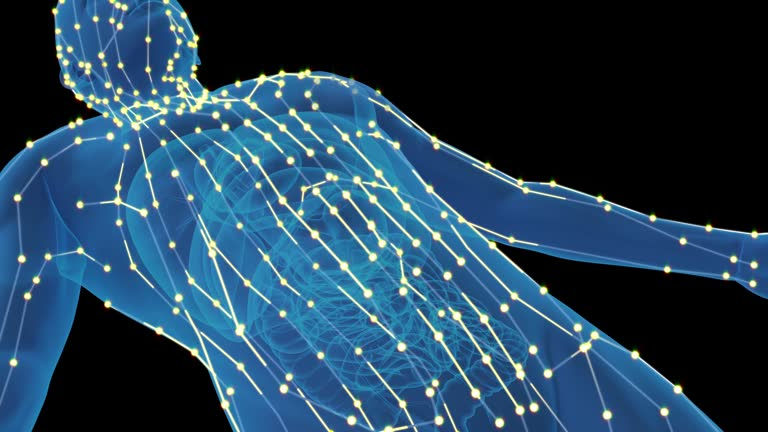The Science Behind Acupuncture: When Ancient Wisdom Meets Modern Evidence
- Dr. Andrew

- Aug 6
- 3 min read

Acupuncture has been practiced for millennia, yet it’s only recently that modern science has begun to illuminate how it truly works. While traditional concepts like “qi” and “meridians” remain foundational in TCM, research is increasingly revealing Biological Mechanisms & Outcomes that align with Western physiology.
Nervous System & Endogenous Opioids
Acupuncture triggers the release of endogenous opioid peptides—such as β‑endorphin, enkephalin, dynorphin, and endomorphin—within the central and peripheral nervous systems, resulting in analgesia and mood enhancement. Clinical and animal studies demonstrate that different stimulation frequencies (e.g. 2 Hz vs. 100 Hz) selectively release specific opioids, optimizing pain relief via measurable biochemical response (PubMed).
Anti‑Inflammatory Effects & Cytokine Modulation
Acupuncture has been shown to reduce pro-inflammatory cytokines such as IL‑1β, IL‑6, and TNF‑α in both human and animal studies.
A controlled trial on chronic headache patients showed a significant decrease in cytokine levels following acupuncture treatments (PubMed).
A 2022 meta-analysis reviewing rodent respiratory disease models found consistent modulation of inflammatory markers across Th1/Th2/Th17 pathways (PMC).
Clinical research in pelvic inflammatory disease patients found acupuncture reduced TNF‑α and CRP levels while boosting anti‑inflammatory IL‑10, leading to improved recovery outcomes (PubMed).
Fascia & Meridian Connectivity
Modern anatomical studies propose that acupuncture points align with fascial connective tissue structures—potentially explaining the phenomenon of meridians as networks of the extracellular matrix. One study found that 80% of acupuncture points correspond to vascular‑nerve bundles within fascia planes (PMC). Another review synthesizes the fascia meridian model, reframing acupuncture’s mechanism in terms of connective tissue signaling and palpation-guided intervention (PubMed).
Further theoretical work explores meridians as low-frequency mechanical waves (solitons) traveling through muscle tissue, proposing a physiomechanical basis for acupuncture point connectivity (arxiv.org).
Improved Blood Flow & Tissue Healing
Clinical imaging (e.g. fMRI, Doppler) indicates that acupuncture increases regional blood circulation and oxygen delivery to targeted tissues—and facilitates natural healing processes in cases of musculoskeletal pain, post-operative recovery, and neuropathy.
Clinical Outcomes & Pain Relief Evidence
A seminal meta-analysis in Archives of Internal Medicine showed acupuncture provides significant and sustained pain reduction for back pain, osteoarthritis, and tension‑type headaches—even when compared to sham interventions.
A randomized trial on sciatica found lasting improvements in both pain intensity and disability scores for over 52 weeks versus sham acupuncture (p < .001) (reddit.com).
Reviews suggest acupuncture is a beneficial adjunct therapy for chronic musculoskeletal pain, migraines, and arthritis, with some trials showing reduced inflammatory biomarkers and improved function (Spandidos Publications).
How Science Connects to Tradition
TCM Concept | Scientific Parallel |
Qi & Meridian Flow | Nervous system signaling, fascial communication pathways |
Balance & Harmony | Neuro-endocrine regulation: endorphins, serotonin, HPA axis |
Preventative Health | Immune modulation through cytokine control |
Despite some skepticism about the existence of meridians in strict anatomical terms, the emerging fascia‑based model and consistent physiological outcomes provide a robust bridge between ancient theory and modern biology (vogue.com).
Conclusion: Evidence‑Based Acupuncture Delivers Real Results
Modern medicine increasingly supports the ancient practice of acupuncture through measurable changes in:
Neurotransmitter and opioid systems, enhancing natural analgesia
Inflammatory cytokine profiles, promoting systemic balance
Fascial disruption and circulation improvement, aiding recovery
Whether addressing pain, insomnia, stress, or inflammatory conditions, acupuncture is backed by credible scientific data—and serves as a safe, non-pharmacological treatment option for patients seeking holistic wellness.
At Beyond Acupuncture, we integrate these scientific insights with time-honored techniques to give you the best of both worlds. From targeted protocols to whole-body balancing, our approach is both ancient in practice and modern in science.



Comments